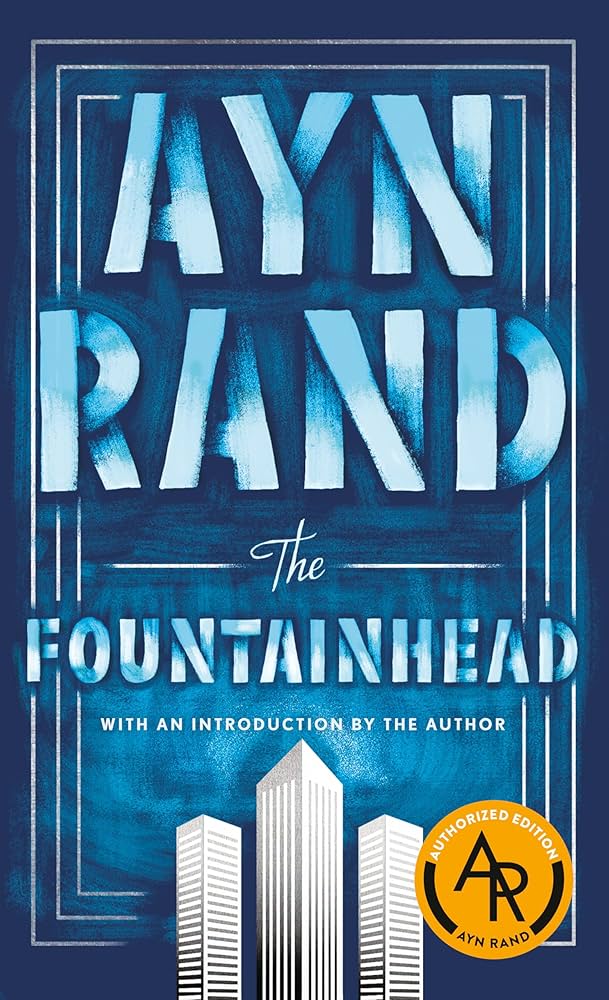
Availability
available
Original Title
The Fountainhead
Subject & College
Publish Date
2000-01-01
Published Year
2000
Publisher, Place
ISBN 13
978-0451191151
Format
Paperback
Language
English
Average Ratings
Readers Feedback
The Fountainhead
This Review of 'The Fountainhead' is done by Mr. Rajat Tomar of S.Y. B.com, M.U. College of Commerce, Pimpri, Pune. "Let's say I have 60...Read More
Mr. Rajat Tomar
The Fountainhead
This Review of ‘The Fountainhead’ is done by Mr. Rajat Tomar of S.Y. B.com, M.U. College of Commerce, Pimpri, Pune.
“Let’s say I have 60 years to live. Most of the time I’ll spend on kids, so if my work is something I don’t touch or find joy in, I will be condemning myself to 60 years of torture.” This is one of the opening dialogues by the main character, Howard Roark, in The Fountainhead. It raises a profound question in the minds of readers about whether their work and values are aligned.
The Fountainhead by Ayn Rand explores a unique perspective on creative freedom and passion, which are at the core of individualism. On the surface, it is a philosophical novel, but what they won’t tell you is that it is very much a practical application of the philosophy of Objectivism, devised by Rand herself. Ayn Rand, a Russian-American writer born in 1905, had a knack for literature from childhood and began writing novels early on. In an interview, she said, “I decided to become a writer when I was 10.” Born in the horrors of Russia, she developed her perspective on communism, which later shaped Objectivism—a philosophy rooted in the purest form of capitalism in the socio-economic sense.
Objectivism recognizes man as an individualistic being, with the achievement of his own personal happiness through productive work and creation as the greatest virtue. It was also popularized under the name “The Virtue of Selfishness.” This view caused some controversy, which in turn helped popularize Ayn Rand’s work, immortalizing her in the pages of history.
Roark, the unconflicted protagonist of the novel, represents the ideal man according to Rand—an individual with integrity as unyielding as granite and a heart full of love for his work. In the beginning, he is expelled from architectural college because he refuses to follow outdated standards that make no sense to him. He is against the idea that all great work in architecture has already been done and that we are only meant to replicate pieces of it. While Roark may seem like an unrelatable character for most people, he still manages to ignite a spark of hope in readers.
On the other hand, we have Roark’s nemesis, Peter Keating, who starts with the same ambitions but diverges greatly from Roark. Keating, though in the same profession, is like the sun to Roark’s moon. Keating always seeks answers and advice from others, never truly sure of himself. He originally wanted to be an artist, but due to his mother’s influence, he was pushed into architecture, as being an artist wasn’t considered a respectable or financially stable career. Keating is a people-pleaser who places others’ opinions above his own. He tries to fit in and be recognized, rather than embracing his individuality. Though it isn’t explicitly stated in the novel, in my opinion, Keating isn’t at peace with himself because he ignores what should be the most important person in his life—himself. Deep down, he disposes of his true self.
The characters in the novel personify different ideas: Roark represents individualism, while Keating represents collectivism. Gail Wynand, the media magnate, serves as a lost individualist. While being an individualist is central to the book, it doesn’t hesitate to show the price one must pay for it. Keating may live in a comfortable, shiny home while climbing the corporate ladder, but Roark struggles to get clients and lives paycheck to paycheck. Roark’s only “weakness” is that he loves his work—he finds joy in it, regardless of the external rewards.
The writing style used by Rand is direct, as neither she nor the book seeks to become a literary epic or masterpiece. It is, however, filled with hard-hitting quotes, some of which can be long and feel as if the author is directly speaking to the reader. The central idea behind the novel is to present the philosophy of Objectivism in a near-realistic setting. This work can be life-changing for people struggling with conflicts related to their work, such as the trendy debate between web fame and professional careers. The book serves as a reminder to those dissatisfied with the comfort of confirmation and herd mentality that there is another way.
